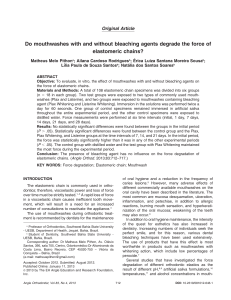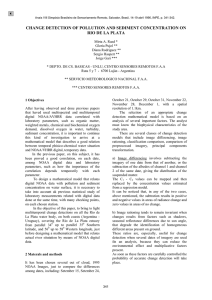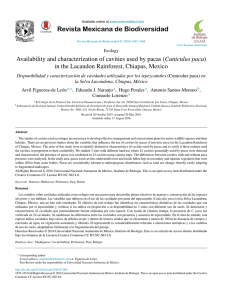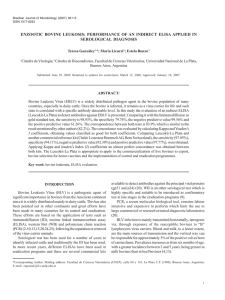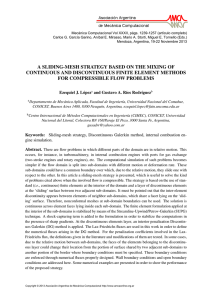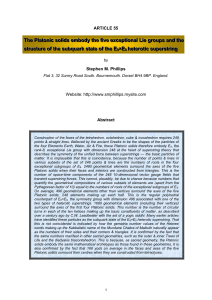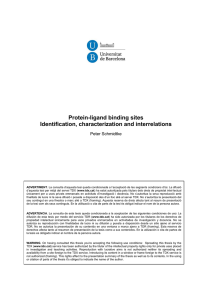on the overall response of elastomeric solids with pressurized cavities
Anuncio
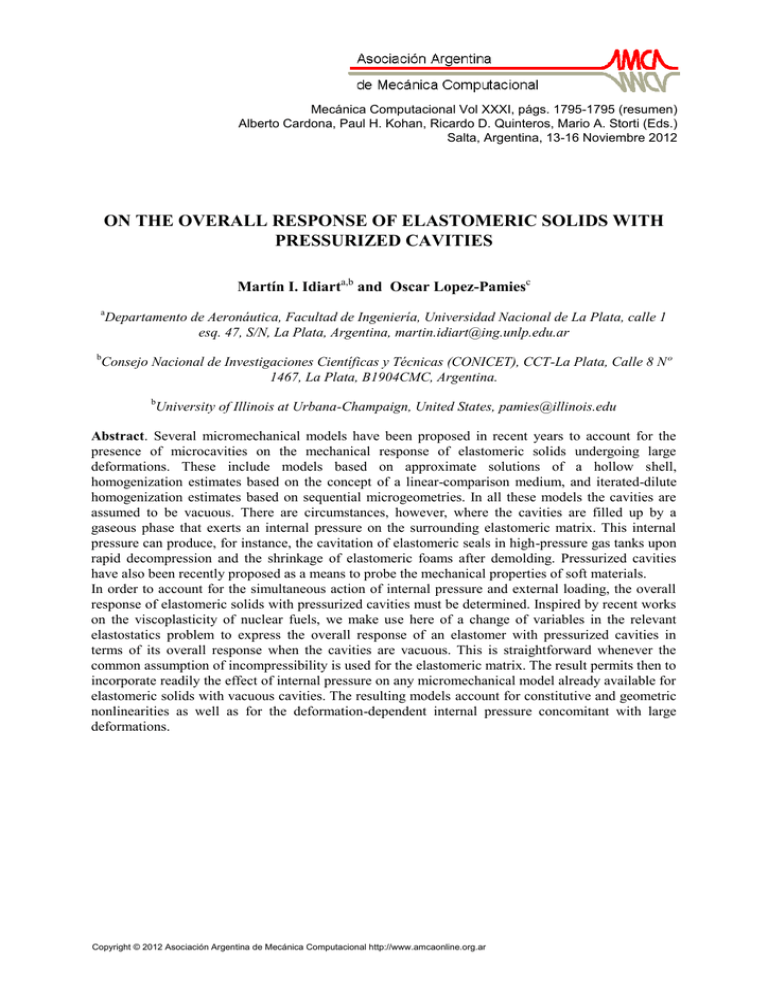
Mecánica Computacional Vol XXXI, págs. 1795-1795 (resumen) Alberto Cardona, Paul H. Kohan, Ricardo D. Quinteros, Mario A. Storti (Eds.) Salta, Argentina, 13-16 Noviembre 2012 ON THE OVERALL RESPONSE OF ELASTOMERIC SOLIDS WITH PRESSURIZED CAVITIES Martín I. Idiarta,b and Oscar Lopez-Pamiesc a Departamento de Aeronáutica, Facultad de Ingeniería, Universidad Nacional de La Plata, calle 1 esq. 47, S/N, La Plata, Argentina, [email protected] b Consejo Nacional de Investigaciones Científicas y Técnicas (CONICET), CCT-La Plata, Calle 8 Nº 1467, La Plata, B1904CMC, Argentina. b University of Illinois at Urbana-Champaign, United States, [email protected] Abstract. Several micromechanical models have been proposed in recent years to account for the presence of microcavities on the mechanical response of elastomeric solids undergoing large deformations. These include models based on approximate solutions of a hollow shell, homogenization estimates based on the concept of a linear-comparison medium, and iterated-dilute homogenization estimates based on sequential microgeometries. In all these models the cavities are assumed to be vacuous. There are circumstances, however, where the cavities are filled up by a gaseous phase that exerts an internal pressure on the surrounding elastomeric matrix. This internal pressure can produce, for instance, the cavitation of elastomeric seals in high-pressure gas tanks upon rapid decompression and the shrinkage of elastomeric foams after demolding. Pressurized cavities have also been recently proposed as a means to probe the mechanical properties of soft materials. In order to account for the simultaneous action of internal pressure and external loading, the overall response of elastomeric solids with pressurized cavities must be determined. Inspired by recent works on the viscoplasticity of nuclear fuels, we make use here of a change of variables in the relevant elastostatics problem to express the overall response of an elastomer with pressurized cavities in terms of its overall response when the cavities are vacuous. This is straightforward whenever the common assumption of incompressibility is used for the elastomeric matrix. The result permits then to incorporate readily the effect of internal pressure on any micromechanical model already available for elastomeric solids with vacuous cavities. The resulting models account for constitutive and geometric nonlinearities as well as for the deformation-dependent internal pressure concomitant with large deformations. Copyright © 2012 Asociación Argentina de Mecánica Computacional http://www.amcaonline.org.ar
